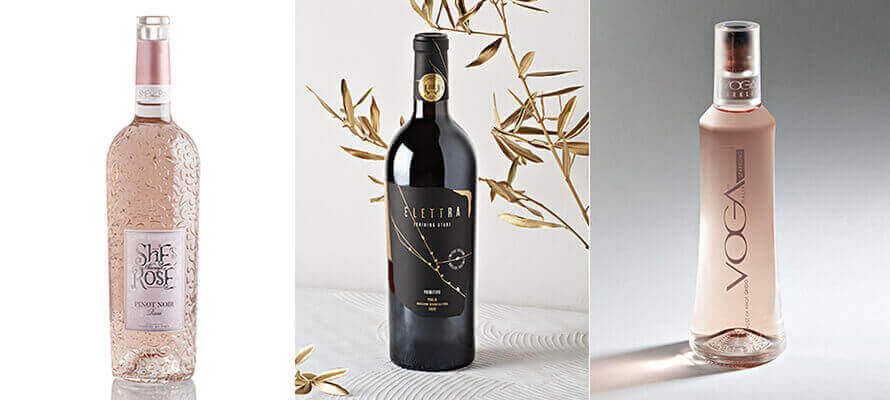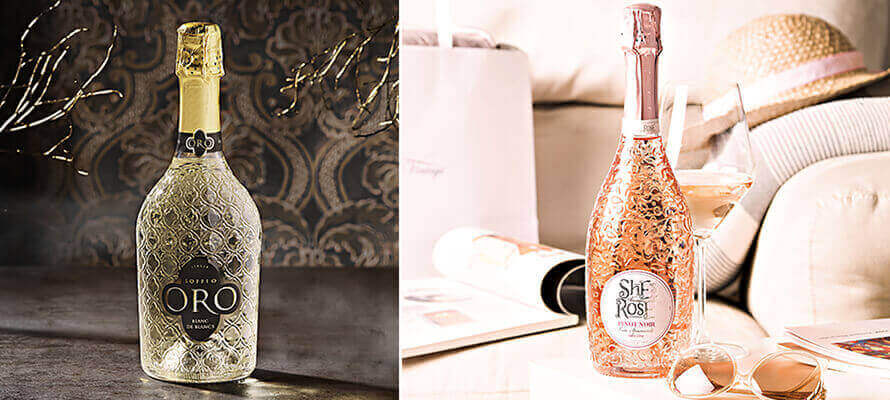Italian Wine Brands
The courage to innovate, from the product to the packaging, is the secret to the success of Italian Wine Brands, a large group that, since 2015, has been investing in the distinctiveness of Italian wine and exporting it all over the world. Its CEO, Alessandro Mutinelli, tells us exclusively about its communication strategies and sustainability-oriented projects.
By Achille Perego
IWB is Italy's largest private wine group, producing quality wines from Italy's most renowned wine-growing areas and distributing them worldwide through all sales channels. Italian Wine Brands (IWB) was born in 2015, landing directly on the stock exchange (Aim market) thanks to the consolidation of two important wine companies (Giordano Vini and Provinco), thus becoming the first Italian wine company to be listed.
Under Alessandro Mutinelli, CEO of IWB, and a team of passionate managers, the group has made further acquisitions in the last four years (Svinando in 2018; Raphael Dal Bo in 2020; Enoitalia in 2021 and Enovation Brands in 2022). This is an example, Mutinelli began, "of how industrial finance combined with entrepreneurial skills and vision allows you to achieve performance in the medium to long term."
In 2021, the group achieved a turnover of over €400 million, 80% of which on international markets, quadrupling its capitalisation and multiplying gross and net margins by 2.5 times.
“Our vision," adds Mutinelli, "is to have our own brand of wine everywhere. To invest in the uniqueness of the "Italian wine" brand, whether still or sparkling, and market it through a multi-channel network. We are the only company in the sector to do this. In recent years, the growth in turnover and margins has resulted from this relentless process of improvement in all company areas to make our products even better. A recognition that certainly comes from the end consumers who choose our brands every day (Grande Alberone, Ronco ai Sassi, Giordano, Poggio del Concone, Elettra) but also from prestigious awards such as the one just received from Berliner Wine Trophy 2022 as Italian Best Producer 'Still Wine’."
IWB is also Italy's second-largest producer of Prosecco, the real driver of worldwide growth in Italian wine exports and undoubtedly a trailblazer for all other wines. Last year, more than 170 million bottles were produced, with Veneto in first place, with white wines and sparkling wines, followed by Puglia, with structured red wines. These are joined by the historic production areas of Piedmont and Tuscany. But what are the reasons for this success?
"We have the strength of a large group that operates worldwide and in all channels (on-trade, off-trade and online). And, with the acquisition of US-based Enovation Brands, it has an open channel in the leading market for Italian wine exports," continues Mutinelli. "As well as being a group that moves in synergy, we also have an unparalleled vantage point for understanding the evolution of consumption trends both in the more historical and traditional markets and in those that are developing and online. One example of this is our investment in the e-commerce channel with Svinando and Giordano, which started ahead of the boom of recent years and is gaining market share throughout Europe.
If we have been successful, it is because we have taken the burden and the risk of innovating, from the product to the packaging. The new types of packaging are aimed, on the one hand, at its reduction and, on the other, at its sustainability, and this applies to all the companies that are part of Italian Wine Brands. These include the experience of Enoitalia, historically one of the first Italian companies to innovate in the sector with its own brands and bring Italian style to the world with the historic brand Voga Italia Pinot Grigio with its unusual cylindrical bottle; today, the sparkling version is being talked about again with the diamond edition of the bottle."
This growth also looks to the future in terms of economic and environmental sustainability. IWB has made significant investments in sustainable, organic products, both with the acquisition of the Swiss company Raphael Dal Bo and the commitment made by Enoitalia in joining VIVA, the project promoted by the Ministry of the Environment for sustainability in viticulture.
How does a leading company like Italian Wine Brands communicate its brand and values?
"There are five values that inspire the activities of Italian Wine Brands: the customer, quality, respect for the rules, the team and innovation. They are in the DNA of the companies in the group and motivate the choices and actions that each of us makes every day. We are building a path to guide and communicate them to make them increasingly tangible to everyone. The strength of a group like ours is in the people and the team that follows the same direction."
In particular, how do you implement communication, from digital to paper-based tools?
"The opening up of communication to multi-channelling has, over the years, influenced the strategies for contact with end consumers and beyond. As we know, the purchase decision and the relationship with the brand take place through the synchronous use of different media, creating communication synergies and trying to transfer brand experience to 360 degrees. Digital certainly has an important share in the mix of levers used; it allows us to be closer, target messages more closely, and measure performance immediately. This does not exclude the use of more traditional tools such as catalogues or mailing activities, which - in the direct sales channel - are still a powerful historical tool for building loyalty."
So, communication that doesn't give up on the past but looks increasingly to the future?
"Innovation for us is not only in the product but also in the sales and relationship processes. The last few years, marked by the pandemic effect, have accelerated direct contact with end consumers, who choose our wines every day and interact directly with the brand through social media. This is a process that the companies in the group have encouraged with initiatives that began spontaneously and then became brand formats. One example is the "Quarantine series by Alberto Nani Prosecco": a social tour with live streaming in different continents (Europe, America, Australia) that brought together consumers, distributors, restaurateurs and wine specialists who talked about themselves, explaining the habits associated with the consumption of Prosecco, their lifestyles and often their cuisine. A way of linking the brand to people and sharing experiences."
How important is packaging in terms of expressing brand values and sustainability?
"Compared to many other consumer segments, the world of wine leaves room for many communication languages. It is a world that embraces all of them. Every wine can become an experience, tell a story, a territory, a style of consumption, creating a direct relationship with those who choose it, and not only that. But you have to know how to do it well! You need fine marketing work but, above all, consistency between wine and storytelling to make the experience authentic, memorable and repeatable. Because the objective of every great brand is to build loyalty, stand out and always be recognisable and the same. We know this well, as we export our brands to more than 80 countries worldwide and create value for the entire distribution chain. Wine is always linked to a moment of pleasure, so the choice of precious and natural papers, foil finishes, thicknesses, and reliefs can transfer, from the first moment of contact, tactile sensations to those who choose one of our bottles. We can tell great success stories. For example, Grande Alberone has won over millions of consumers throughout Europe 10 years after it was launched on the market, partly because of the way it tells its story. Obviously, the wine always makes the difference because it is there that the consumer experience is complete: a path of consistency and respect for the raw material that we never neglect."
How do you best achieve this combination of content and container?
"You have to be strict, attentive to detail and selective. It's a demanding job for a group like Italian Wine Brands, which moves around 450 million labels a year between front and back and neck collars in several wineries throughout Italy. Plus, you need the graphics and design departments that work directly with all suppliers to preview new products and design with them the innovation that leads to success. But at the same time, you need teamwork that extends to quality, buying and technicians who study new packaging solutions, including sustainable solutions and production efficiency. You have to design businesses that are sustainable in the long term. For many of our wines, we have chosen recycled paper to reduce our carbon footprint, and we have also joined projects with our suppliers to transform part of the production waste into new paper. The conception of new languages and the creation of iconic wines capable of intercepting global trends and translating them into consumption styles have been the key to the international renown of many of our brands – for example, Gemma di Luna, with its characteristic blue bottle, which is now one of the fastest-growing brands in the USA and the Far East. But there are many other wines that, over the years, have been able to stand out for their design and planning: Lignum Vitis, the wine dedicated to science, with its special wooden label; Voga Italia was certainly a pioneer in years when innovation in wine was still hard to imagine, with its line of designer glassware; Elettra with its relief finishes in cast gold and soft touch; She's always rose because of its worked bottle with glass closure, which is being launched in the United States in these months, expanding the offer in the world of rosé wines; Neroperso was awarded by the jury of retail operators of Vini&Consumi, during the Special Edition of Vinitaly, for best wine packaging 2021."
What does this teamwork, in which IWB relies on the most important companies in the graphics sector - including Biemme Etichette Autoadesive from Brescia, Labelit from Venice led by Marcello Busetto and Etigraph from Chions (Pordenone), a company specialising in self-adhesive labels on reels - have in store for this year?
"Tradition and innovation will once again be the combination to deal with 2022. This is what the market is asking of us, confirming the innovative mission of the entire group. Last year we presented the Icons catalogue, dedicated to glass innovation and available to all our international customers. This year we will be presenting the new Sparkling 2022 collection, which is currently being previewed by management clients and which we will officially present at Vinitaly and Prowein. One of the new items we will present is Soffio Oro, a line of Italian sparkling wines already on sale, which combines the design of the glass inspired by the elegance of the Venetian style with the tactile finish of its label and the unfailing brand language that supports the value of our wines."





